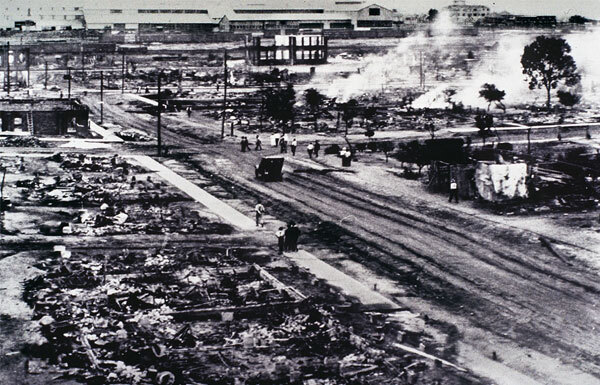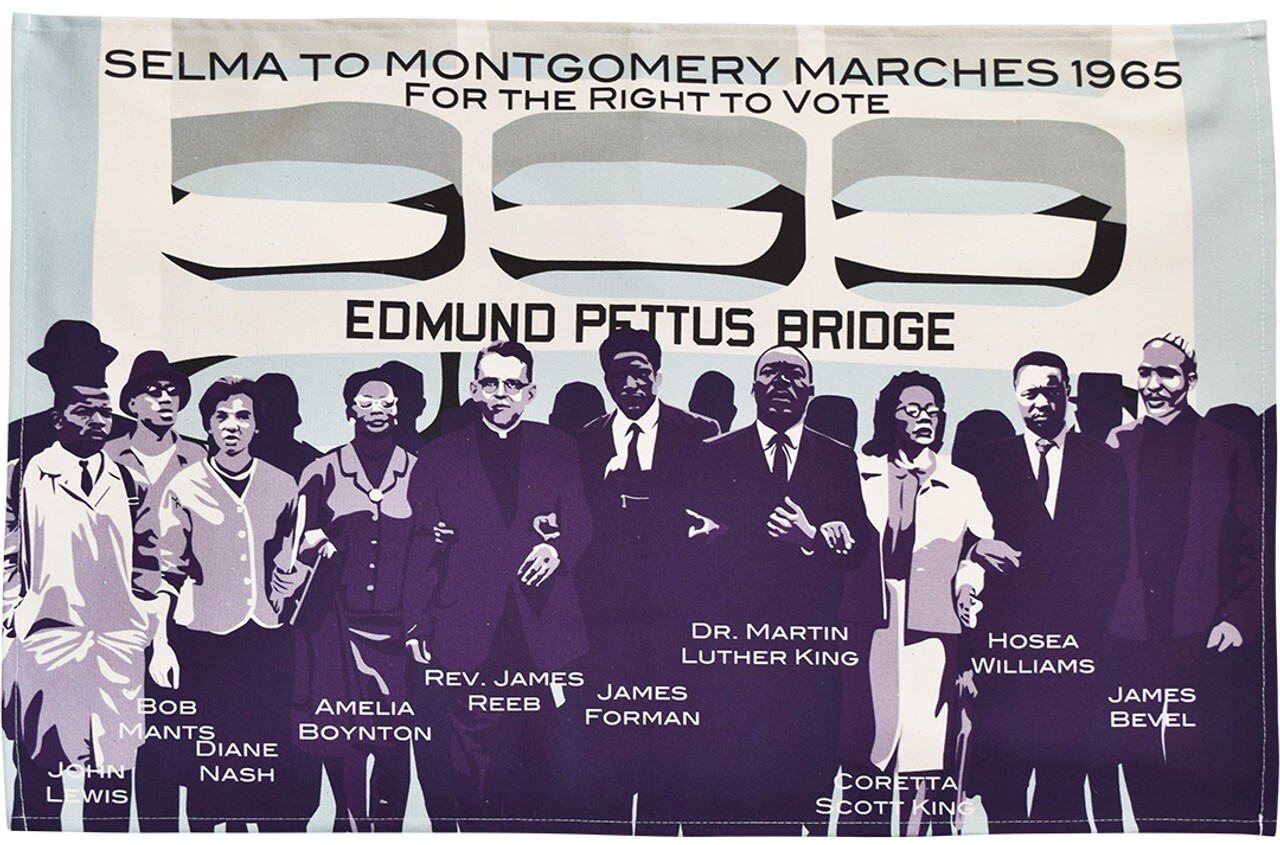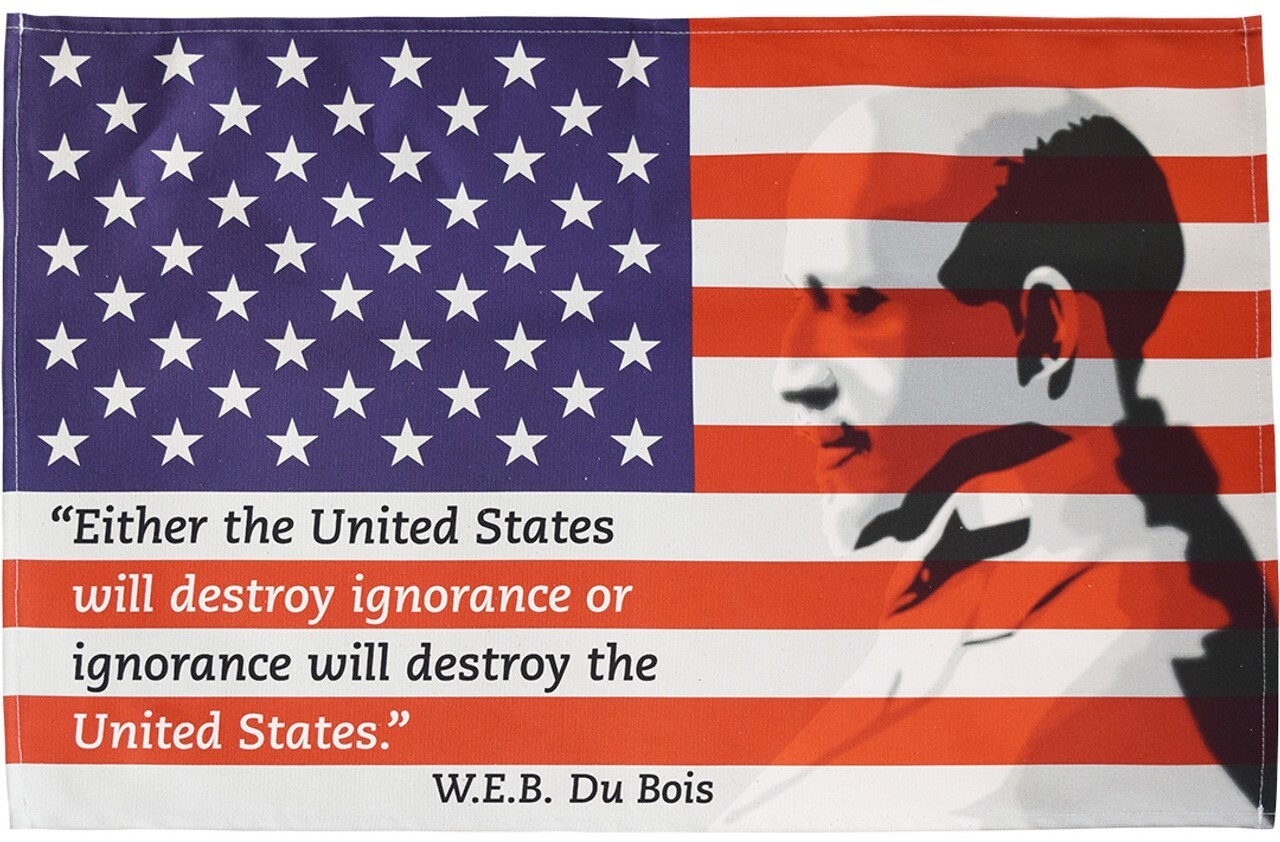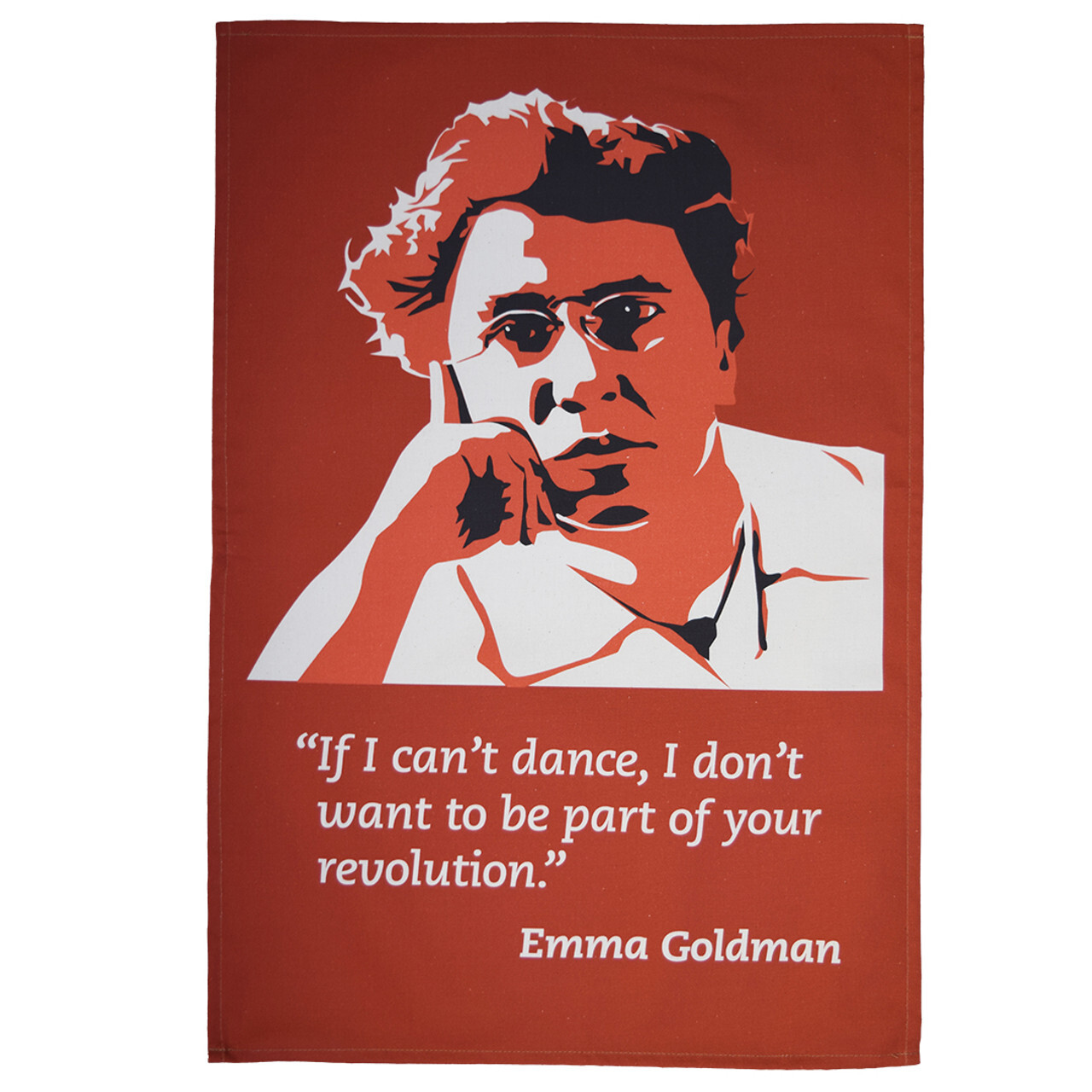The Horrors at Tulsa
Posted by Pete on 29th May 2025
A prosperous black community was destroyed in Oklahoma today barely a century ago

On 31 May 1921, the Black citizens of Tulsa, Oklahoma, were besieged.
For two days, a white mob launched an anti-Black pogrom in the city.
With the collaboration of local law enforcement, the Black community of Greenwood was destroyed, thousands of Black residents were interned, and 26 were killed.
The Tulsa Massacre of 1921 is among the worst instances of racial violence in modern American history.
The progressive forces that exploded in the post-War Civil Rights Movement had been building for decades
See the Selma Marches tea towel
Oklahoma already had a complicated history of racial and colonial violence.
It was here that the indigenous tribes of the Southeastern U.S., such as the Choctaw and Cherokee, were deported during the ‘Trail of Tears’.
Some of these ethnically cleansed indigenous people also enslaved Africans, forcibly bringing them along to Oklahoma.
And after the Civil War, defeated Confederate rebels migrated to Oklahoma as well, importing their racist ideology.
When Oklahoma was made a full State in 1907, its lawmakers built a Jim Crow dystopia for Black citizens, based on segregation and racist violence.
The KKK was a powerful paramilitary force in the State, and anti-Black lynching was widespread.
Yet despite these conditions, Black Oklahomans had built a prosperous community in Tulsa by 1921.
There was so much business activity in the Black neighbourhood of Greenwood that it was called the ‘Black Wall Street’.
The Black sociologist and activist W. E. B. Dubois observed, “I have never seen a colored community so highly organized as that of Tulsa.”
W.E.B. Du Bois was impressed by the community built in Greenwood, Tulsa
See the W.E.B. Du Bois tea towel
Most of this development was intentionally destroyed during the Tulsa Massacre of 1921.
A mob of thousands of white men, aided by sections of the local police and National Guard, invaded Greenwood and set fire to the whole area.
The rioters, following the template of anti-Black violence across the U.S., used an accusation that a Black teenage boy had assaulted a young white woman to organise a lynch mob.
Black citizens in Greenwood realised that the boy, Dick Rowland, was at risk of being murdered.
They drove, armed, to the Tulsa courthouse to protect the jail from being stormed by the mob.
Gunfire broke out and the Black defenders, massively outnumbered, had to retreat to Greenwood.
A potential lynching now turned into a full-scale pogrom as the racist mob stormed Greenwood, shooting and burning.
The Tulsa authorities responded by either doing nothing or else actively helping the rioters.
Greenwood, a national symbol of Black flourishing, was ruined.
Many Black citizens were permanently displaced from Tulsa (one of the rioters’ goals) and it took decades to rebuild.
Tulsa was a tragic and monstrous injustice perpetrated by a white mob against black citizens
See the Tulsa Massacre tea towel (American site only)
The Tulsa massacre of 1921 didn’t happen in a vacuum.
It was a part of the reactionary crackdown across the U.S. in the years after 1917.
The First Red Scare is the most familiar part of this story.
Progressive activists like Eugene Debs and Emma Goldman were attacked, imprisoned, or deported en masse for speaking against WW1 and in support of the working class.
But racial violence was also a key part of this antidemocratic crackdown on class politics.
The ‘Red Summer’ of 1919 – a national wave of anti-Black riots and lynchings – was a prelude to Tulsa, and it happened at the same time as the ‘Palmer Raids’ that imprisoned and deported thousands of foreign-born progressives.
The American ruling class appreciated how the politics of Black liberation and class were connected.
Black labourers formed a huge part of the U.S. working class, and the labour movement also built alliances with middle-class Black communities such as Greenwood.
The suppression of both class and racial politics in the post-WWI era was linked, affecting thinkers and activists including Emma Goldman
See the Emma Goldman tea towel
This is why struggles against racism in America have always ended up in class politics. Martin Luther King was assassinated while supporting a black sanitation workers strike in Memphis.
And it’s also why in reactionary moments like the early 1920s, repression of the American working class has always been accompanied by the reinforcement of white supremacy, just like at Tulsa.
Many of the instigators of the Tulsa Massacre had been involved in earlier attacks on labour organisers in Oklahoma, like the Wobblies and the Knights of Labor. It’s no coincidence.
And thirty years later, McCarthyism also went after black civil rights organisations like the NAACP.
The Tulsa Massacre of 1921 is an example of how racial and class domination go together in America – because the promise of racial and class liberation go together, too.




